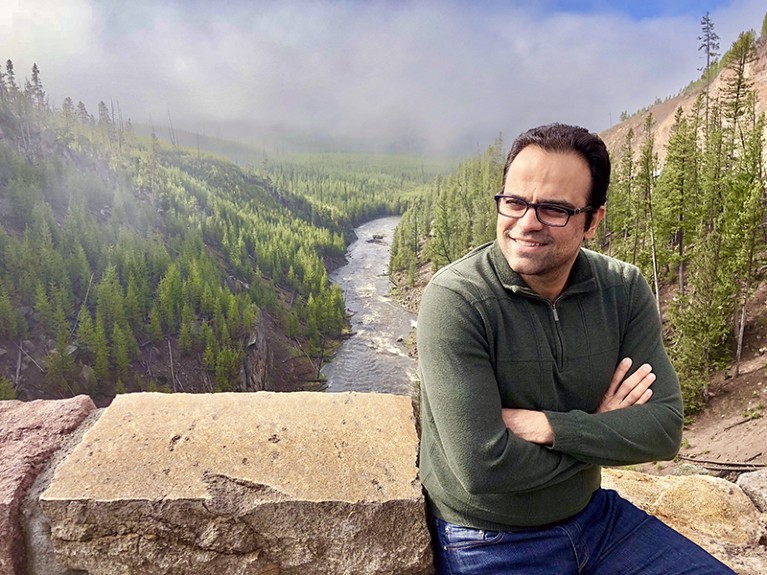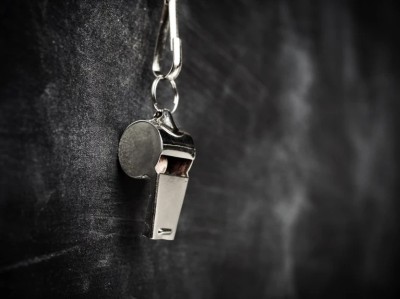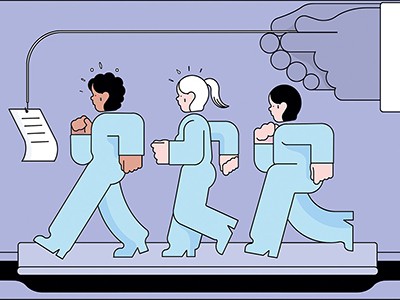[ad_1]

Morteza Mahmoudi is the co-founder of the Academic Parity Movement, an organization that aims to end bullying in academia.Credit: Haniyeh Aghaverdi
I experienced a wide spectrum of academic bullying and eventually had to quit a job because of it. It was a heart-wrenching decision. Since my departure, I’ve found peace in a supportive work environment. I was determined to use all the available means to prevent others from facing similar situations.
So, alongside my scientific work, I study the root causes of academic bullying and harassment and seek solutions to them. I forgave my bully last year, but I still find it challenging to forgive those who protected the bully and ultimately forced my departure.
How to blow the whistle on an academic bully
In 2019, I co-founded the Academic Parity Movement, a non-profit organization based in Brookline, Massachusetts, with Saya Ameli Hajebi, an environmental activist. The organization’s ultimate goal is to bring an end to bullying and harassment in academia. I first met Saya through my wife, who is a friend of her mother.
The first thing we did was raise awareness of the problem among stakeholders, including academics, funding agencies and university ranking agency representatives. We then told them how to recognize bullying, and taught them strategies for addressing it.
Expanding our reach
I collaborated with Sherry Moss, an organizational-behaviour researcher at Wake Forest University in Winston-Salem, North Carolina, to better understand the context of bullying and harassment in academia. We ran a global survey that garnered more than 2,000 responses1 and personal narratives. Some of these appeared in a 2021 story in Science, alongside the survey findings.
This meant that the voices of people who were bullied were being heard on a broader scale. A closer analysis of the survey data revealed that academic bullying and harassment does not affect all scientific fields equally2. This highlights the necessity for tailored and context-specific training, monitoring and intervention strategies when addressing academic bullying.
Bullied abroad: how foreign researchers can fight back
Next, I collaborated with specialists in tackling bullying from various scientific disciplines. We created a comprehensive list of actionable steps and precautions that those being harassed can take, and that bystanders can use to support them.
It took the Academic Parity Movement three years to assemble the necessary advisory board members, spanning different subjects and regions. All are volunteers, driven by a shared commitment to helping others in need. We have a newsletter, published every two months, which includes information about relevant publications, news, conferences and resources around academic bullying and harassment.
Last year, we received 832 requests for help. When a request comes in, we offer the person informal advice. Then, I refer them to a board member in their discipline and cultural context, so that the advice is more relevant and personalized. We also provide a course that helps to empower people by reinforcing the idea that they are not alone. Advice and testimonials from academics who have experienced bullying provides a sense of community and shared understanding.
Last January, we started providing access to lawyers specializing in academic-harassment cases, and also to sessions with counsellors specializing in trauma to help clients to improve their mental well-being. These services are funded by contributions from several of our board members, fundraising initiatives and membership fees.
Underpaid and overworked: researchers abroad fall prey to bullying
We have held three annual conferences so far. They bring together representatives from funding agencies, academic institutions and ombudsperson offices, as well as journal editors and decision makers. The fourth will take place next month at Wake Forest University.
I also shared my own experiences and lessons I have learnt, alongside emerging patterns of bullying and harassment, in ‘A survivor’s guide to academic bullying’3, published in Nature Human Behaviour in 2020. My aim is to raise awareness and to empower people to understand their rights, helping them to protect themselves and their families. It is important to recognize that individuals at all levels of academia, from students to tenured faculty members, can be targets of bullying and harassment. I take immense pride in the progress we’ve made over the past few years, with numerous volunteers joining our cause. We’ve provided advice to thousands of people, financially supported many to get legal advice and mental-health counselling and brought stakeholders together at workshops and conferences.
And although my personal anguish lingers and can still bring me to tears, I hope that the community that we have created will turn the tide so that others — and their careers — won’t suffer as I did.
This is an article from the Nature Careers Community, a place for Nature readers to share their professional experiences and advice. Guest posts are encouraged.
Competing Interests
M. M. is a co-founder and director of the Academic Parity Movement, a non-profit organization dedicated to addressing academic discrimination, violence and incivility, and a co-founder of Targets’ Tip, a bullying and harassment education programme. He receives royalties and honoraria for his published books, plenary lectures and licensed patents.
[ad_2]
Source Article Link




